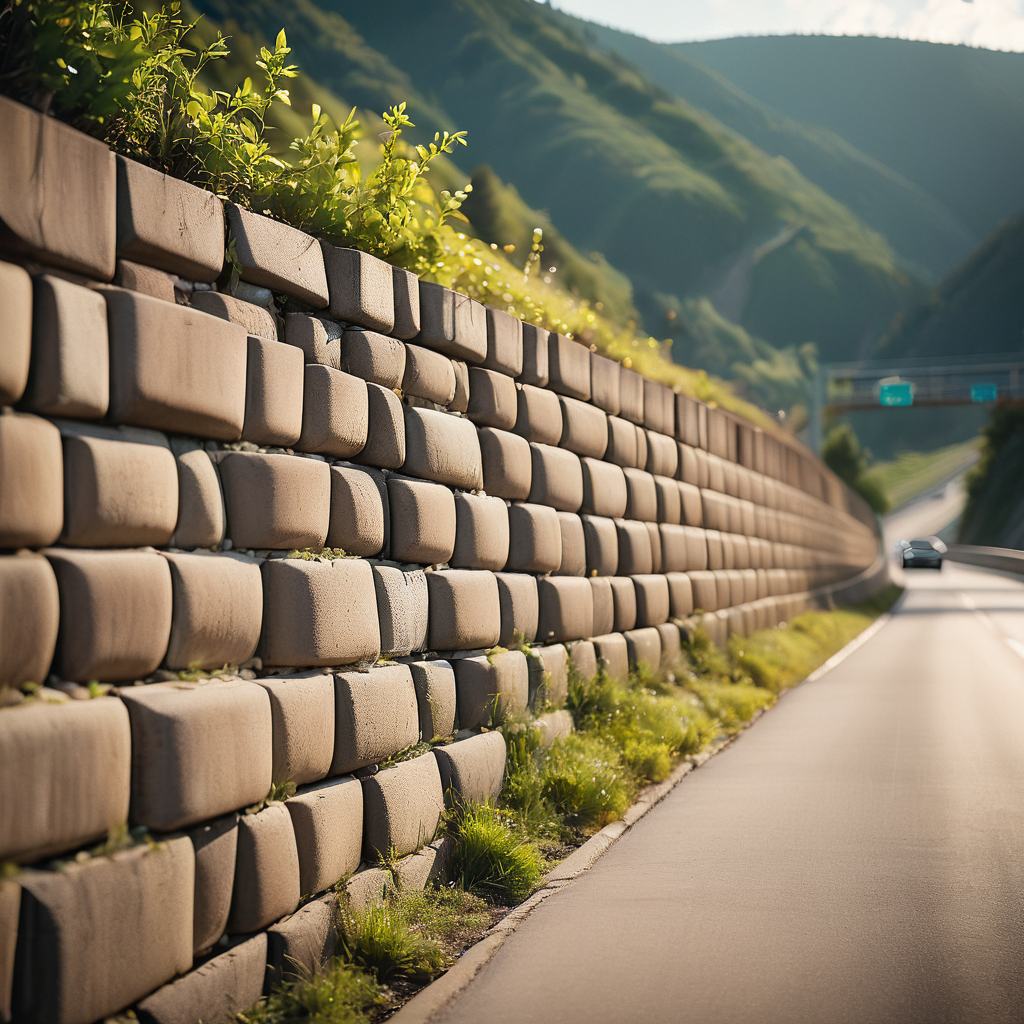
Block Retaining Walls
Block retaining walls are often the go-to choice for residential and commercial landscaping projects. These walls are constructed using interlocking concrete blocks, which are designed to fit together without the need for mortar. The blocks are stacked to form a wall that leans slightly backwards towards the soil it’s retaining, creating a sturdy barrier that resists the lateral pressure of the soil.
Pros:
- Aesthetic Appeal: Block retaining walls come in a variety of colors, textures, and styles, offering aesthetic flexibility to match any landscape design.
- Durability: Concrete blocks are highly durable and resistant to weathering, making them a long-lasting solution.
- Ease of Installation: The interlocking system makes them relatively easy to install, often without the need for professional help.
Cons:
- Height Limitations: Block retaining walls are typically suitable for heights up to 4 feet, beyond which structural issues may arise without proper reinforcement.
- Cost: While the initial cost can be moderate, the overall expense can increase significantly for higher or more complex structures due to the need for additional reinforcement.
Tie-Back Retaining Walls
Tie-back retaining walls, also known as anchored retaining walls, are a form of retaining wall that utilizes anchors (or “tie-backs”) drilled deep into the soil behind the wall and then attached to the wall itself. These anchors are typically made of steel and are used to provide additional support to the wall, making them ideal for taller or more heavily loaded walls.
Pros:
- Strength and Stability: The tie-back anchors provide significant additional support, allowing these walls to retain larger volumes of soil and handle greater lateral pressure.
- Versatility: Tie-back retaining walls can be constructed using a variety of materials, including concrete, steel, and wood, and are suitable for a wide range of heights and soil conditions.
- Space Efficiency: Since the anchoring system is located behind the wall, tie-back walls can save space in tight areas.
Cons:
- Complexity and Cost: The installation of tie-back walls is more complex and requires specialized equipment and expertise, leading to higher initial costs.
- Maintenance: Over time, the anchors and the wall itself may require maintenance to ensure structural integrity.
Making the Choice
The decision between a block retaining wall and a tie-back retaining wall ultimately depends on several factors, including the height and length of the wall needed, the soil conditions, the available space, and budget considerations. For smaller, decorative walls that blend with the landscape, block retaining walls are often the preferred choice. Conversely, for taller, structural walls where space is limited or the soil pressure is high, tie-back retaining walls offer a robust solution.
Regardless of the type you choose, it’s crucial to consult with a professional engineer or landscape architect to ensure that your retaining wall is designed and built correctly, adhering to local building codes and regulations. Proper design and construction will ensure that your retaining wall is both functional and durable, holding back soil and beautifying your landscape for years to come.
Cedar Hill St. Louis Jefferson County Olivette Kirkwood Ballwin Arnold Franklin County St Charles County Fenton High Ridge Dittmer Creve Coeur
